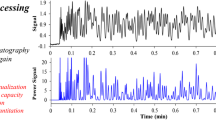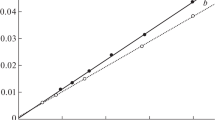Summary
The principle of automated chromatographic peak detection and analysis software is summarized, and critical steps are systematically studied. As the only parameter to be entered is the acquisition frequency, evaluation of its effect on software performance is discussed. In the case of relatively noisy chromatograms, it is shown experimentally that numerous points per peak have to be taken, leading to quite fast computer acquisition procedures. The use of discrete Fourier transform filtration techniques can modify peak shapes and a comparative study evaluates the relative errors induced in the shapes and characteristics of the chromatographic profiles. Optimisation of filtering conditions is achieved and it is shown that for a filter position only 2% of the Nyquist frequency no deformation occurs in the chromatographic profile. Detection of the start and finish of chromatographic peaks is optimized according to a simple four step iterative procedure. In the case of simulations, the difference between the values used to simulate peaks and those calculated by the software are less than 1%.
Similar content being viewed by others
References
Ph. J. P. Cardot, P. Trolliard, S. Tembely, J. Pharm and Biomed. Anal.8, 755 (1990).
N. Dyson, “Chromatographic Integration Methods” in RSC Chromatography Monographs,R. M. Smith, ed., University of Technology, Loghborough, UK, 1990.
J. P. Foley, J. G. Dorsey, J. Chromatogr Sci,22, 40 (1984).
M. S. Jeansonne, J. P. Foley, J. Chromatogr. Sci.,29, 258 (1991).
W. H. Press, B. P. Flannery, S. A. Teukolsky, W. T. Vetterling, “Numerical Recipes in C”, Cambridge University Press, New York, 1989, p. 398.
S. P. Cram, S. N. Chesler, A. C. Brow III, J. Chromatogr.126, 279 (1976).
G. J. De Groot, Trends Anal Chem.4, 134 (1985).
J. L. Escoffier, G. Guiochon, Chromatographia,15, 543 (1983).
T. Petitclerc, G. Guiochon, J. Chromatogr. Sci.,14, 531 (1976).
P. C. Kelly, G. Horlick, Anal. Chem.45, 518 (1973).
R. W. McCoy, R. L. Allen, R. E. Pauls, E. R. Ziegel, T. Wolf, G. T. Fritz, D. M. Marmion, J. Chromatogr. Sci.22, 425 (1984).
R. Q. Thompson, J. Chem. Educ.,62, 866 (1985).
P. Trolliard, Thèse d’exercice, Diplôme d’Etat de Docteur en Pharmacie, Université Paris XI, Centre pharmaceutique, Châtenay Malabry France, 1990.
S. N. Chesler, S. P. Cram, Anal. Chem.43, 1922 (1971).
Author information
Authors and Affiliations
Rights and permissions
About this article
Cite this article
Cardot, P.J.P., Trolliard, P. & Guernet-Nivaud, E. Optimisation of data handling and detection conditions for automated chromatographic assay software. Chromatographia 33, 361–368 (1992). https://doi.org/10.1007/BF02275919
Received:
Revised:
Accepted:
Issue Date:
DOI: https://doi.org/10.1007/BF02275919




